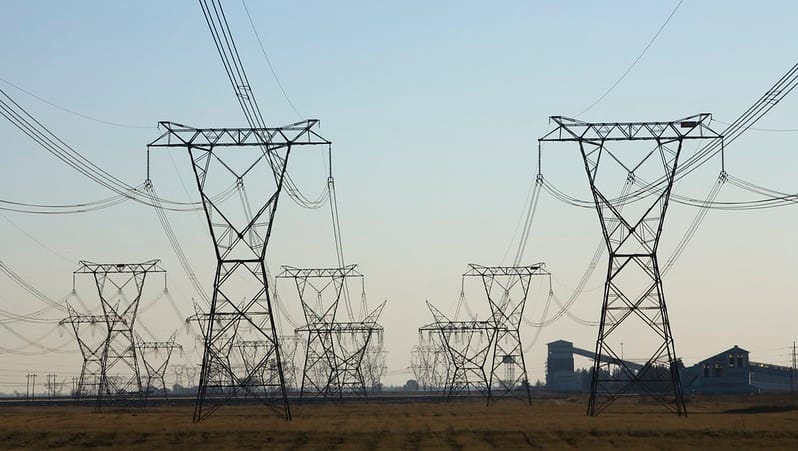COP29 Aims to Boost Battery Storage and Grids for Renewables, as Pledges Proliferate.
As renewable energy pledges multiply, COP29 is doubling down on solutions to overcome one of the most significant challenges in the renewable energy sector: ensuring reliable and efficient energy storage and transmission.


The world is at a critical juncture in its battle against climate change, and the 29th United Nations Climate Change Conference (COP29) has emerged as a pivotal moment.
Held in the bustling city of Dubai, UAE, this year’s conference brings together leaders, scientists, businesses, and activists to address the urgent need for scaling up renewable energy infrastructure, with a key focus on battery storage and grid enhancements.
As renewable energy pledges multiply, COP29 is doubling down on solutions to overcome one of the most significant challenges in the renewable energy sector: ensuring reliable and efficient energy storage and transmission.
Why Battery Storage and Grid Modernization Are Crucial
Renewable energy sources like solar and wind are intermittent by nature. Solar panels produce electricity only during the day, and wind turbines rely on wind conditions.
This intermittency requires robust storage solutions and advanced grid systems to ensure a consistent and stable energy supply.
Key Challenges Addressed at COP29
- Energy Storage: Current battery technologies, while improving, still struggle to store large amounts of energy for extended periods at an affordable cost.
- Grid Capacity: Many power grids, especially in developing nations, are outdated and cannot handle the integration of large-scale renewable energy projects.
- Energy Access: Remote regions often remain disconnected from national grids, limiting their access to renewable energy despite abundant local resources.
Major COP29 Initiatives for Battery Storage and Grids
- Global Battery Alliance
COP29 has seen renewed commitments from governments and private stakeholders to the Global Battery Alliance, which aims to scale up sustainable and ethical battery production. This includes investments in advanced battery chemistries, such as solid-state batteries, which promise higher energy density and faster charging times. - Green Grids Initiative
Spearheaded by a coalition of nations, the Green Grids Initiative seeks to create a globally interconnected grid that can transfer renewable energy across borders. For instance, solar power generated in the Middle East could be transmitted to Europe, ensuring a continuous energy supply regardless of time zones or weather conditions. - Energy Storage Deployment Targets
Several countries have announced ambitious targets to expand energy storage infrastructure. The U.S., EU, China, and India collectively pledged to deploy 500 GW of storage capacity by 2035, a move that will drastically reduce reliance on fossil fuels for grid stabilization. - Financing Mechanisms
A significant outcome of COP29 is the establishment of new financing mechanisms for developing nations to upgrade their grids. Through initiatives like the Green Climate Fund, low- and middle-income countries will receive financial and technical assistance to modernize their energy systems. - Regional Renewable Energy Corridors
COP29 has also championed the creation of regional renewable energy corridors, such as the Africa Renewable Energy Initiative and the Asian Clean Energy Grid, which aim to connect renewable-rich regions with high-demand areas.
Pledges Proliferate: A Snapshot
The surge of new pledges at COP29 underscores the global commitment to renewable energy transition. Key announcements include:
- India: Commitment to build 100 GW of battery storage by 2030 to complement its 500 GW renewable energy target.
- EU: A $50 billion investment in modernizing grids across member states by 2030.
- U.S.: Launch of the “Storage for All” initiative, which aims to make battery storage technologies affordable and accessible to households by 2040.
- China: Expansion of its grid-scale storage projects, including a 10 GW pumped hydro storage facility.
- Africa: A coalition of nations pledged to establish 50,000 microgrids powered by solar and wind by 2035, ensuring energy access for rural communities.
The Role of Private Sector and Technology
The private sector is stepping up as a vital partner in the renewable energy transition. At COP29, companies like Tesla, Siemens, and BYD showcased cutting-edge technologies in battery storage and grid management, while venture capitalists pledged billions toward clean energy startups.
Innovations Highlighted
- Grid-scale batteries: Advances in lithium-sulfur and sodium-ion batteries.
- AI-driven grid management: Real-time optimization of energy flow to reduce waste.
- Decentralized grids: Blockchain technology for peer-to-peer energy trading in local communities.
The Way Forward
While the pledges and initiatives announced at COP29 are promising, their success hinges on actionable implementation and robust accountability mechanisms. Challenges such as supply chain disruptions, geopolitical tensions, and financing gaps must be addressed collaboratively.
Governments must work alongside international organizations, private companies, and civil society to ensure that the momentum from COP29 translates into tangible results. Moreover, ongoing innovation in battery technology and grid management will be crucial in meeting the world's growing energy demands sustainably.
Conclusion
COP29 has set the stage for a transformative leap in renewable energy infrastructure.
By prioritizing battery storage and grid modernization, the conference has highlighted the backbone of a successful energy transition. As pledges proliferate, the global community must focus on turning these commitments into action.
The journey to a sustainable future is complex, but COP29 has shown that with innovation, collaboration, and determination, a world powered entirely by clean energy is within reach.
Stay tuned as the outcomes of COP29 unfold, shaping a cleaner, greener energy landscape for generations to come.




